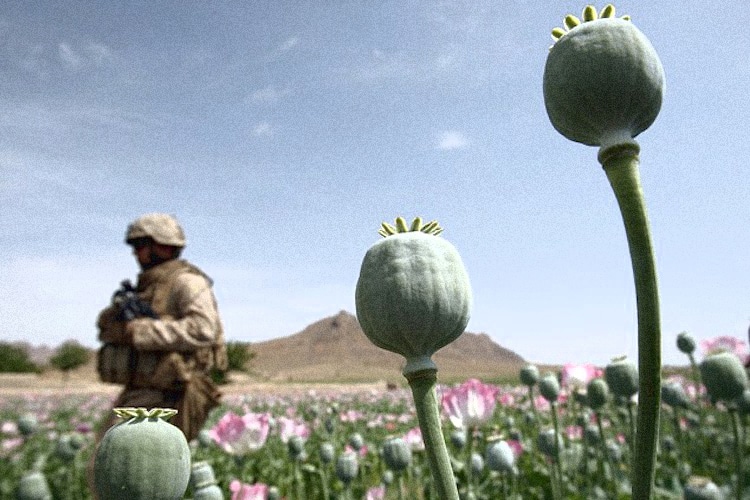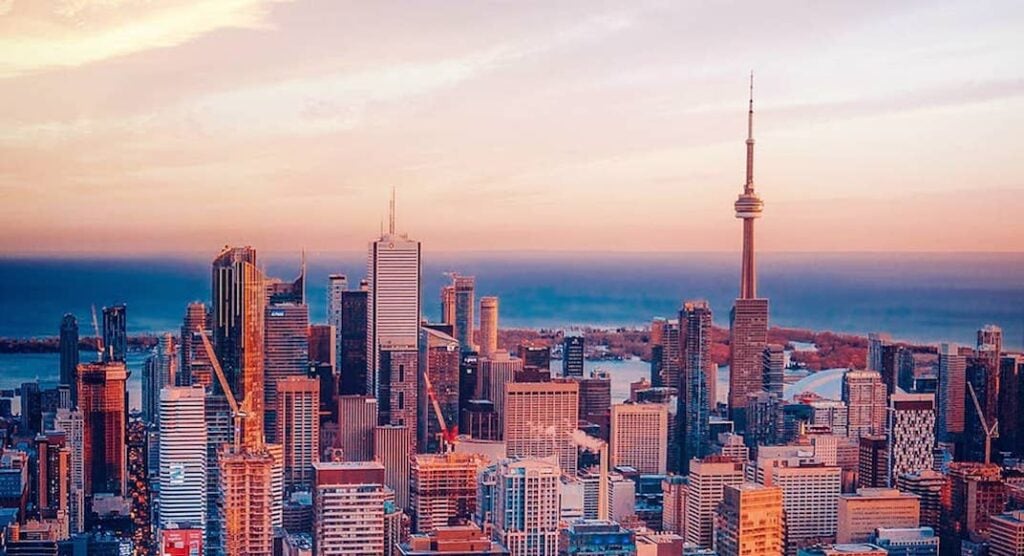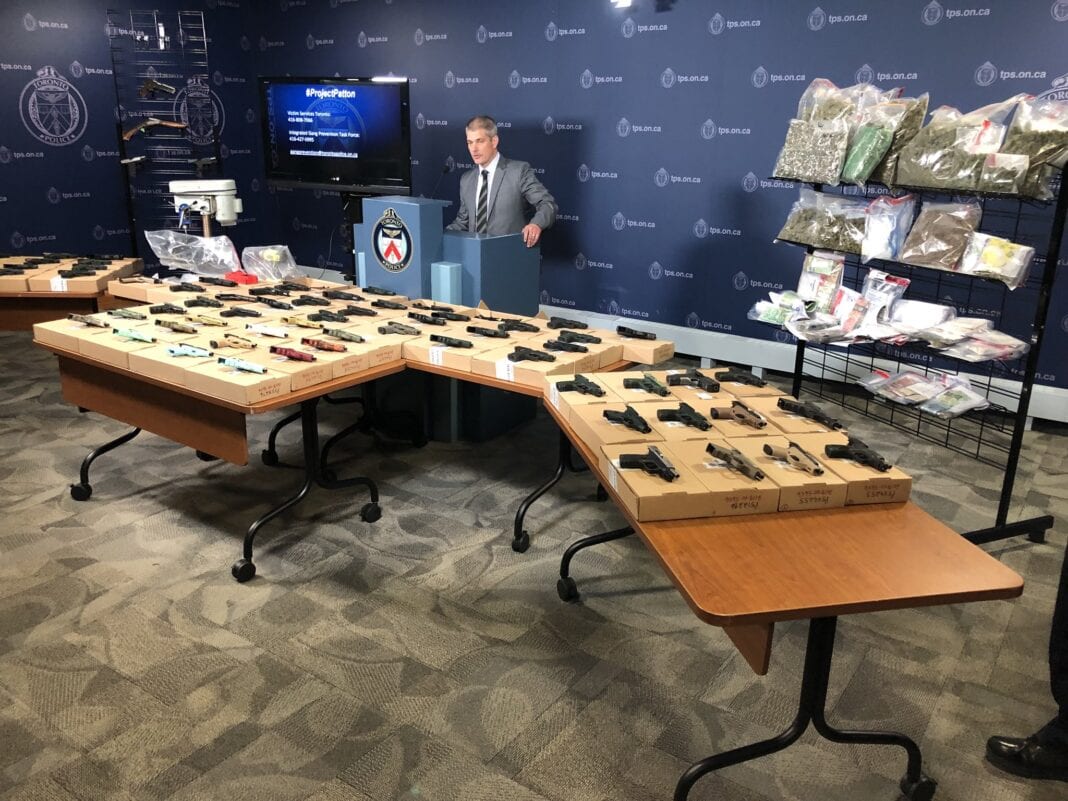Canada is incredibly close to America, sharing seven borders. As Canada is the ‘end point’ or ’round trip stop’ for several drug trafficking supply chains, it should come as no surprise that Canada suffers the many consequences that come with drug trafficking. This article, there will be an outline of one of Canada’s drug trafficking hot spots: Ontario.
As a result of drug use increasing in Canada since the Covid-19 Pandemic (source), this is a topic of great concern. A topic that policymakers need to be heavily focused on.
A variety of international organised crime groups and as well as domestic ones are severely active in Ontario. It should also be noted that the majority are in relation to drug trafficking (source).
Names of some of these organised crime groups include:
- Ndrangheta
- Hells Angels
- The Wolfpack
- The Jalisco New Generation Cartel (Cártel de Jalisco Nueva Generación, CJNG)
- Sinaloa
- The Red Devils
These are just the organised crime groups that are made publicly aware. There are over 2,600 organised crime groups who are active in Canada alone (source).
1.0: Ontario’s Drug and Crime History
Ontario, the most populous province located in central Canada (source), has a notorious history of drug-related crime.
A snapshot:
- Late 17th century – introduction of alcohol to the Indigenous communities of Canada by French and British colonizers. ‘trading posts are established (source).
- The 1700s-1800s – Opium is legal in Canada and brought over by the Europeans who obtained it from China, India, and the Middle East (source).
- The 1800s – Europeans bring Coca (cocaine) from South America to Canada; used as an ingredient for medicines such as cough drops (source).
- The late 1800s-1900s – Due to the influence of Protestantism, unregulated medicine considered immoral (source).
- 1908 – The Opium Act resulted in a chaotic prohibition period for Canada (source).
- 1911 – The Opium and Drug Act; cocaine and morphine added to the list and drug-related convictions increased (source).
- 1920 – The Opium and Narcotic Drug Act; intensified police presence, increased jail sentences, and a more prominent illegal drug market (source).
- The 1940s-1950s – the transition from smoking opium to injecting it (source).
- The 1960s-1970s – “sex, drugs, and rock and roll”. A surge of illegal drug use increases (source).
- 1971 – President Nixon declares ‘War on Drugs” (source).
- 1988 – Canada signs Convention Against Illicit Trafficking in Narcotics and Psychotropic Substances (source).
- The early 2000s – the debate on ‘harm reduction’ and supervised injection sites (source).
- 2020 – the most opioid overdoses in Canadian history; more than 9,800 Canadians died as a result of an opioid overdose (reported) (source).
- 2023 – CBSA (Canada Border Services Agency) reported a 1000% increase in drug trafficking across borders since 2019 (source).
This timeline shows a long history (not an entire history) of drug use and abuse in Canada. It is clear that there is still a major problem with drug-related criminal activity. Arguably, none of the Acts mentioned above have actually succeeded in mitigating drug trafficking and/or drug-related activities.
The question remains: what does Canada do now?

1.1: China: Main Fentanyl Supplier
In recent news (February 1st, 2023), Toronto police, yet again, have busted a drug trafficking incident in association with cartel-based groups. Cocaine, crystal methamphetamine, and 3.8 kilograms of fentanyl seized (source).
According to Ontario Provincial Police (OPP) and CBSA, fentanyl is transported from China, via mail and shipping containers (source).
Moreover, In 2021, out of opioid overdoses, 91% were related to fentanyl in Ontario alone. More concerningly, these were accidental deaths (source). Ontarians are taking fentanyl directly and indirectly; Health Canada’s Drug Analysis Service (DAS), reported that 69% of opioids (collected by the police) contained at least some level of fentanyl (source).
Due to the nature of the drug, it is tasteless and odorless, and it can be absorbed through the skin (source). This makes it easier to ‘traffick’ as it is not easy for authorities to detect the drug. Additionally, people are more at risk for accidental overdoses such as law enforcement workers.
1.2: Afghanistan and Pakistan: Main Heroin Suppliers
Opium (then turned into heroin) flows from Afghanistan into Pakistan, mainly through the Balochistan and Khyber Pakhtunkhwa borders. It is then transported by ships, boats, and sometimes planes(source); this is where and how Canada 90% of the time, receives its opium (heroin) (source).
Opium is also purchased online (source), a new phenomenon in the drug trafficking world.
Furthermore, Ontario holds the highest number of deaths relating to heroin overdoses in all of Canada (source) and one that has been incredibly difficult for the authorities to control.

1.3: Mexico: Main Cocaine Supplier
Cartels in Mexico have been prominent players in the drug trafficking of cocaine into North America for years. They continue to play the biggest role in the trafficking of cocaine into Ontario (source)
CBSA has detected that cocaine entering Southern Ontario is coming from these ports:
- Port of Hamilton
- Port of Windsor
- Port of Toronto
- Port of Sarnia
- Port of Goderich
(source).
Check out 2.2 to see the port locations on a map.
From these ports, mainly transport truck and tractor-trailer drivers, transport the cocaine into the inner cities (source).
Mexican Cartel associations in Ontario:
- Sinaloa
- The Jalisco New Generation Cartel (Cártel de Jalisco Nueva Generación, CJNG)
- The Wolfpack
(source).
Indeed, cocaine continues to be one of the most profitable illicit drug in Canada and in 2020, 313 organised crime groups participated in the trafficking of cocaine (source).
2.0: OCGs (Organised Crime Groups)
In 2020, The RCMP (Royal Canadian Mounted Police) reports that 11% of the 313 assessed OCGs are based in Hamilton and Toronto Ontario (source). These organised crime groups are linked to the Ndrangheta mafia, based in Italy (source).
These ‘smaller’ organised crime groups found in Ontario, are heavily controlled by the Ndrangheta mafia; the criminal activity seen (violence, intimidation, arson, transportation of drugs, murder, etc.), is performed by organised crime groups but in the name of Ndrangheta (source).
In Toronto Ontario alone, seven prominent mob families are active and each of these families are connected to drug trafficking networks (source).
2.1: Project Coyote (Jan 2022-Present)
A project with the goal of dismantling drug and gun trafficking rings in Ontario has succeeded to some degree. According to Chief Superintendent of the OPP Paul Mackey, the OPP is working with other police forces in Canada, and other law enforcement agencies to take an ‘integrated intelligence approach’ which has shown great success thus far (source).
January of 2023 – 27 arrested by the OPP in Toronto for association with the Ontario drug networks (source). Police seized 1.5 kg of Fentanyl, 26 kg of cocaine, 6 kg of crystal methamphetamine, etc (source).
February 2023 – seven more were arrested including gang members from the well-known motorcycle gang in Ontario called “Hells Angels” (source).
2.2: Map of Top Three Cities With the Most Drug-Related Criminal Activity in Ontario

3.0: Windsor’s Drug Trafficking Cases 2023
- January 23rd – police found 475 grams of fentanyl powder and 161 grams of cocaine in a Windsor vehicle (source).
- February 21st – $50,000 found in cocaine and cash as a result of a search warrant (source).
- March 1st – Four people arrested due to trafficking $60,000 worth of illegal drugs (source).
- March 3rd – Windsor police conduct search warrants in Windsor residences; 26.6 grams of powder cocaine, 32.6 grams of fentanyl, nine grams of crack cocaine, and 1,012 grams of crystal methamphetamine found (source).

3.1: London’s Drug Trafficking Cases 2023
- January 19th – London Police Service Uniformed Division and Guns and Gangs Section seized illegal possessions from a London home including 487 grams of fentanyl, 341 Dilaudid pills, 34 Temazepam pills, six grams of crystal methamphetamine, nine rounds of 9mm ammunition, a loaded Glock 19 semi-automatic handgun with an over-capacity magazine, and lastly, a herbert-schmidt Model 11. 38 caliber revolver (source).
- January 25th – a total street value of drugs seized by Ontario police was $244,370 (source).
- February 21st – Two 19-year-olds arrested due to possessing handguns, knives, ammunition, fentanyl, cocaine, crack cocaine, etc (source).

3.2: Toronto’s Drug Trafficking Cases 2023
- January 9th – Toronto resident arrested as a result of having possession of fentanyl, cocaine, crystal methamphetamine, and firearms (source).
- January 18th – 12 people arrested in the Greater Toronto Area (GTA) due to being in relation to Ontario’s organised crime networks; part of the Project Coyote investigation (source).
- February 22nd – 15 people arrested including members of the Hells Angels and the Red Devils (source). They had a list of illegal possessions which included 16 kilograms of cocaine, 1.5 kilograms of fentanyl, 6 kilograms of crystal methamphetamine, 400 crystal methamphetamine pills, 20 lbs of cannabis, 500 packages of cannabis edibles, 700 cannabis edibles, eight lbs of hashish, and finally, seven grams of psilocybin (source).

4.0 Conclusion
Surprisingly to non-Ontario residents, Ontario does have elaborate drug trafficking networks; this is only a snapshot of one province in Canada and does not account for the several other drug networks that there are in the rest of the country.
Also, it is clear that the police, other law enforcement agencies, criminal intelligence analysts, and policymakers have a lot on their plate in regard to mitigating these drug trafficking rings in Ontario.
Finally, as drug usage, online drug markets, and organised crime groups continue to increase, the more complicated mitigating these cases will become; the authorities have to be vigilant, especially with the new phenomenon of digital drug markets emerging.

